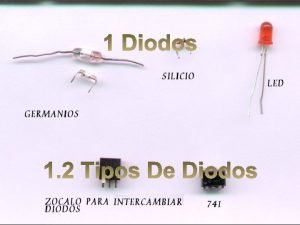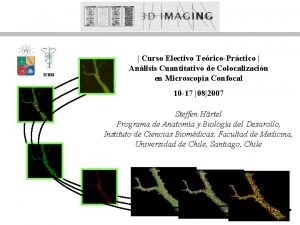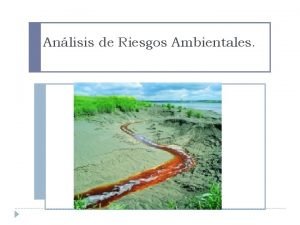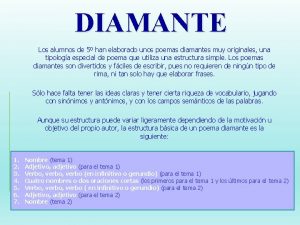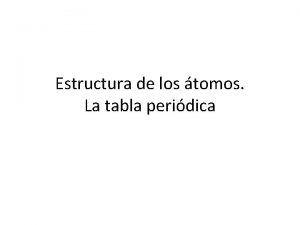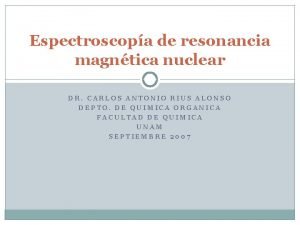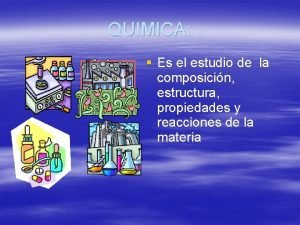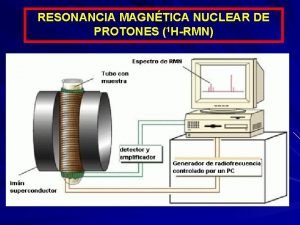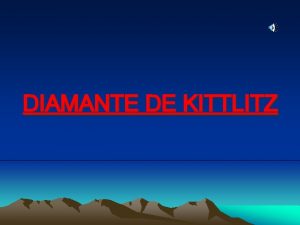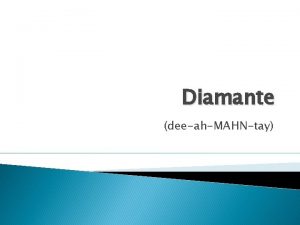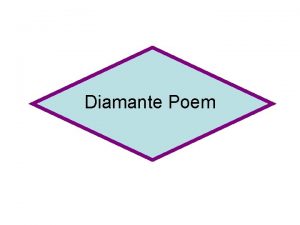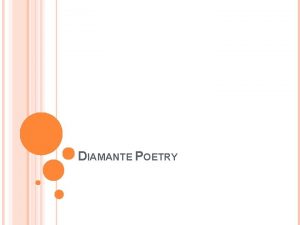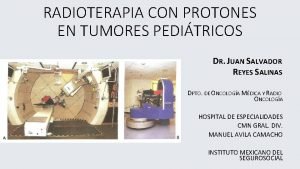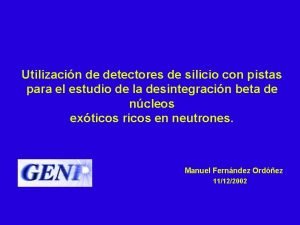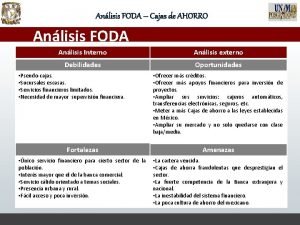Anlisis de detectores de diamante monocristalinos con protones













- Slides: 13

Análisis de detectores de diamante monocristalinos con protones de baja energía M. C. Jiménez Ramos, J. García López, C. Cazzaniga, M. Rebai VIII CPAN 28 -30 Noviembre 2016 Zaragoza

CNA LOW ENERGY NUCLEAR PHYSICS MATERIALS CHARACTERISATIO N DETECTORS CHARACTERIZATION NEUTRON BEAMLINE ION IMPLANTATION IRRADIATION - All stable ions available: H - Au DAMAGE - Energy range: 600 ke. V – few Me. V - Beam currents: m. A - p. A - Continuous and pulsed beams VIII CPAN DAYS 28 -30 Noviembre 2016 Zaragoza

VACUUM MICRO BEAM LINE - Particle detectors (PIPS) - X-ray detector (Si. Li) -Microscope - Ion beam size ~ 4 x 4 μm 2 - Beam current: n. A to few pps (micrometric slits) - Scanning system: few mm 2 -Synchronous signal acquisition system with scanning: mappings VIII CPAN DAYS 28 -30 Noviembre 2016 Zaragoza

What is Ion Beam Induced Charge? Deposited energy Free charge generation and transport + Ouput signal Vout = F (deposited energy, free carrier transport) VIII CPAN DAYS 28 -30 Noviembre 2016 Zaragoza

What is Ion Beam Induced Charge? IONS - p, , Li, C, O, . . POSITION RANGE - Focusing and scanning - 1 to 1000 m 100 p. A current – 620 ions in 1 s signal ion beam +V RATE -017: 27 103 p/s . 01 f. A current – 620 ions/second VIII CPAN DAYS 28 -30 Noviembre 2016 Zaragoza 4 µm

¿Por qué buscar alternativas al Si? Properties of diamond, 4 H–Si. C and Si crystals M. Moll , NIM in Physics Research A 511 (2003) 97– 105 Property Diamond 4 H–Si. C Si Eg (e. V) 5. 5 3. 27 1. 12 μe (cm 2 V s− 1) 1800 1500 μh (cm 2 V s− 1) 1200 115 450 e–h energy (e. V) 13 8. 4 3. 6 Displacem. (e. V) 43 25 13 -20 Density (g cm− 3) 3. 52 3. 21 2. 33 Intrinsic carriers at (300 K) (cm-3) <1 x 10 -26 6. 7 x 10 -11 1. 4 x 1010 VIII CPAN DAYS 28 -30 Noviembre 2016 Zaragoza Mayor gap: menor corriente inversa que el Si Mayor umbral de desplazamiento: Más resistentes a la radiación que el Si Menor concentración de portadores intrínsecos: Comportamiento semiconductor a altas temperaturas

Diamond Detector Applications A wide range of detector applications and detector types make diverse demands on the material • Particle physics: beam condition monitors, trackers • Dosimetry: radiation therapy, equipment calibration • Synchrotrons: white beam monitoring • UV detectors: photolithography , flame detection and solar physics • Alpha/Beta: air-Flow and survey meters, waste incineration • Nuclear applications: nuclear reactors and fusion experiments VIII CPAN DAYS 28 -30 Noviembre 2016 Zaragoza

Colaboración Dipartimento di Fisica G. Occhialini Università Milano-Bicocca Diamond A: crystal 4. 5 x 0. 5 mm 3 and large gold contacts Diamond B: crystal 2. 0 x 0. 3 mm 3 and contact 0. 5 x 0. 5 mm 2 VIII CPAN DAYS 28 -30 Noviembre 2016 Zaragoza

Results: CCE 100% CCE Scan: 2. 5 x 2. 5 mm 2 Maps of diamond B recorded at -240 V VIII CPAN DAYS 28 -30 Noviembre 2016 Zaragoza 50% CCE

Results: Polarization Efect To observe PE the diamond detector was irradiated at V= -240 V in a 100 µm x 100 µm scan area with 1 Me. V protons. Each spectrum was recorded during 30 s with a count rate about 150 cps. Therefore, the fluence accumulated per spectrum is around 4. 5 107 p/cm 2 To recover the detector from the PE, the same area was irradiated with bias at V=+240 V. Each spectrum was recorded during 60 s with a count rate about 900 cps. Therefore, the fluence accumulated per spectrum is around 5. 4 108 p/cm 2. The full recovery takes place at about 4 x 109 p/cm 2. VIII CPAN DAYS 28 -30 Noviembre 2016 Zaragoza

Results: Polarization Efect Polarization Effects induce the evolution of the CCE versus fluence for 1 and 3 Me. V protons. VIII CPAN DAYS 28 -30 Noviembre 2016 Zaragoza

Results: Permanent Damage We irradiated a spot of 50 µm x 50 µm for 630 s with a particle flux of 2∙ 109 s-1 cm-2 ( ≈ 5∙ 104 cps), accumulating a total fluence 1∙ 1012 protons/cm 2. Scan: 500 x 500 µm 2 VIII CPAN DAYS 28 -30 Noviembre 2016 Zaragoza

Thanks for your attention !!! M. C. Jiménez Ramos: mcyjr@us. es VIII CPAN DAYS 28 -30 Noviembre 2016 Zaragoza
